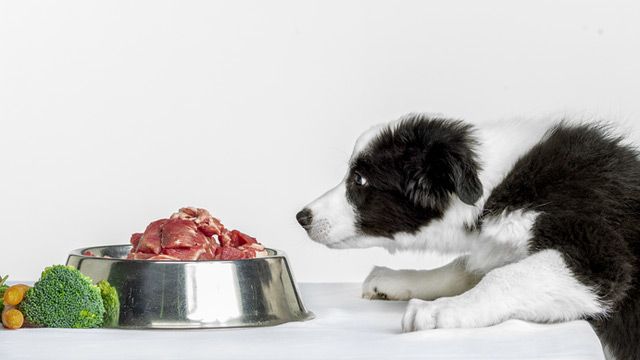- March 8, 2022
- No Comment
- 5 minutes read
Puppyhood Diet May Impact a Dog's Allergies Later in Life – Technology Networks

We’ve updated our Privacy Policy to make it clearer how we use your personal data.
We use cookies to provide you with a better experience. You can read our Cookie Policy here.
Complete the form below and we will email you a PDF version of “Puppyhood Diet May Impact a Dog’s Allergies Later in Life”
Researchers at the University of Helsinki studied the relationship between allergy and atopy related skin symptoms at adult age and different types of diets as well as individual dietary food items in the same 4022 dogs when they were puppies.
“The puppies that had been fed raw tripe, raw organ meats, and human meal leftovers during puppyhood showed significantly less allergy and atopy related skin symptoms in adult life. On the other hand, puppies not getting any raw foods, eating most of their food as dry food, i.e. kibble, being fed fruits, and heat-dried animal parts, had significantly more allergy and atopy related skin symptoms in adulthood”, says DogRisk research group team leader, Docent Anna Hielm-Björkman from the Faculty of Veterinary Medicine, University of Helsinki.
According to the study, consumption of at least 20% of the puppy’s diet as raw food, or less than 80% of the puppy’s diet as dry food, associated with a significant decreased prevalence of allergy and atopy related skin symptoms in adult age. Also, in case of no consumption of raw food at all or eating 80% or more of the puppy’s diet as dry food, there was a significant increase in the prevalence of allergy and atopy related skin symptoms in the same dogs, later in life. Further, when feeding 20 % of other type of processed commercial dog foods (such as canned or sausage packed foods), also this associated with a significant increase in the prevalence of allergy and atopy related skin symptoms, while consumption of zero % of the puppy’s diet from these same foods, significantly decreased the prevalence of the disease in adulthood.
”These findings indicate that it was the raw food component that was the beneficial health promotor,” says Hielm-Björkman, “and that even as little as 20% of the diet being raw foods, already gives health benefits”.
In addition to the previous variables, puppies that were eating dead animals outside i.e. “air dried raw food”, also showed a decrease in the incidence of allergy and atopy related skin symptoms as adults.
“Our mission is to find ways for the dog-owner to impact their own pet’s health-span. We could see an association between lower prevalence of allergy and atopy related skin symptoms as adult and serving puppies fresh foods and avoiding processed foods as well as sweet fruits. That’s a good start for any owner,” says Manal Hemida, DVM from the DogRisk research group and from the Helsinki One Health network, and the main researcher of this study. “However, the study only suggests a causal relationship but does not prove it. Diet intervention studies are required to further elucidate the in-depth association between the development of atopy and allergy related skin symptoms and dietary factors such as raw and dry foods, human meal left-overs and the correct dosing of oils,” concludes Hemida.
Reference: Hemida MBM, Salin S, Vuori KA, et al. Puppyhood diet as a factor in the development of owner-reported allergy/atopy skin signs in adult dogs in Finland. J. Vet. Intern. Med. 2021;35(5):2374-2383. doi: 10.1111/jvim.16211
This article has been republished from the following materials. Note: material may have been edited for length and content. For further information, please contact the cited source.

